Steph W. from SEOPressor


...help you check your website and tell you exactly how to rank higher?


93
score %
SEO Score

Found us from search engine?
We rank high, you can too.
SEOPressor helps you to optimize your on-page SEO for higher & improved search ranking.
By winniewong on September 14, 2016

When we think about SEO, we invariably think about getting to the top of the search engine rankings. Everybody knows this is important, but because of the focus on technical processes, we often lose sight of why it’s important. Namely, it puts our company in front of more human users.
(If you’re a beginner, read this blog post to get started with SEO.)
User Experience, or UX, is an online discipline designed to make websites look and feel better for the human users. This requires some knowledge of design principles, psychology, and more. As a result, many SEO practitioners will abandon it in favor of focusing on what seems like a simpler, more straightforward way to get traffic.
After all, the idea is not simply to get one-time traffic to the site, but people who come to the site, spend time there, build loyalty, and make purchases.
This means that for many SEO practitioners, UX just became a priority.
User experience puts the human user first and prioritizes how they experience the site over how it performs on search engine algorithms. As a result, the two strategies can conflict, and there are challenges in resolving the two together into a unified strategy. With a little work, it is possible, and the results can be phenomenal.
In this article, we’ll explore how to reconcile these two forces, UX and SEO, so that they both work for you. But before we get started, you might want to have a read on the things that you need to know about user experience and SEO.
SEO has been an evolving art form because search engine algorithms have been evolving. SEO has attempted to match websites with what algorithms are looking for, but it has taken algorithms a long time to start to match what their end users are looking for.
We’re now at the time in SEO evolution where algorithms and user’s demand are beginning to converge. As such, the old techniques are becoming less effective, and creating a good quality website is paramount. But what does good quality mean?
It means:
Google, Bing, Yahoo, and more are all looking for ways to improve their user experience. They don’t want to waste their searchers’ time with irrelevant results. Search engines now know when users are bounced back to the search results from a website, but they don’t know why, which means you can be punished even if it wasn’t your fault.
We want to make sure anyone finding your site sticks around, finds it relevant and helpful. It has every chance to take the desired action you’ve created the site for in the first place.
The foundation stone of online marketing is keyword research. This is a discipline all its own, and one we have discussed in detail before, which is the keyword research evolution.
Understanding the basic technique is no longer enough – you have to understand the motivation behind these searches, and the idiosyncrasies that inform them. This is split into two main categories:
User language
While you are immersed in your product and industry all day every day, your customers aren’t. As a result, the way they refer to your products or services may be different to how you would describe them.

At the bottom of Google results page, you can get more ideas from the related queries that users are searching for.
Keyword research allows you to discover the kind of language people use to talk about you, so you can mirror it back to users and get discovered online. What’s more, this research will also start to reveal the problems users face and the solutions they’re looking for.
User intent
User intent is more discoverable through long-tail keywords, four or five-word phrases used by users to get specific answers. UX and SEO don’t tell you much about the relationship the user wants to explore, “How to combine user experience and SEO” absolutely does.
Researching long-tail keywords will give you insight into how you can match your content to user intent. (Read our blog post to find out whether to use short-tail or long-tail keywords.)

You can also find out the type of queries that users are searching for based on Google autocomplete.
If you haven’t yet undertaken any keyword research, there’s no better time to start than now. We have already created a guide to how you can perform keyword research effectively.
Rankings are meaningless unless you can get users to actually click on the site. In order for them to do so, you need to make sure your content is fully optimized to hook people, demonstrate your value, and align with user language and intent. Sounds like a tall order, but there’s a defined set of steps you can take to make sure you maximize your relevance:
Title Tag

The title tags are the clickable link in the search result. Google has generously increased the character limit on title tags to 70-71 characters, meaning you can write a title that’s powerful, emotive and optimized. This will wring every drop of effectiveness from your title tags.
URL

Your URL is an opportunity to double down on signals of relevancy. If the URL itself mirrors the users’ intent, they will be far more likely to click than if it is a dissociated string of letters and numbers. This additional signaling is a valuable opportunity you can take advantage of to increase your click-through rate by assuring users your content will be relevant.
Meta Description

Meta description gives you an additional 222 characters to work with. This can include a top-line summary of actionable implications of your content so people can see how it benefits them. This allows you to really hammer home the value, not just the relevancy, and encourage those clicks to keep on coming.
With these covered, you have the best chance of giving users confidence in your ability to meet their expectations. The trick now is to actually deliver on the promise you have made to those users.
Your search results have piqued their interest and they’ve clicked on your site. Now, you have to make sure they see what they were looking for when they click through. However, that’s only one thing you need to do to make them stick around.
While they’re engaged, there are plenty of opportunities to be taken advantage of:
Content Optimization
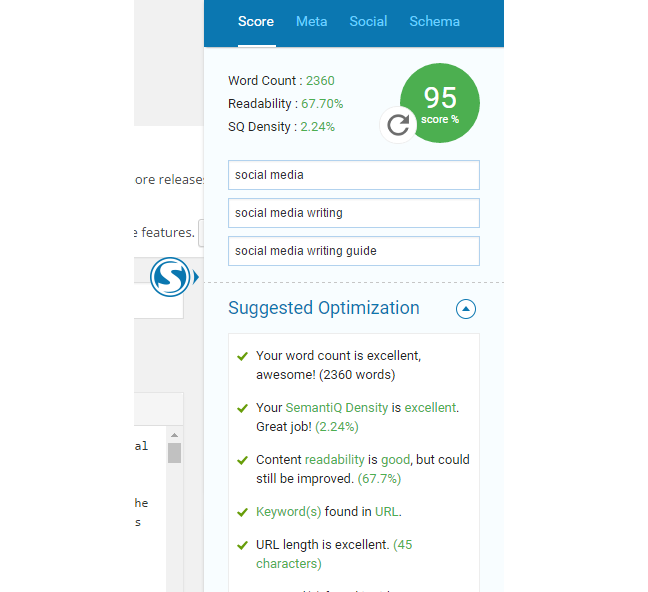
SEOPressor On-Page SEO Analysis System can be your SEO mentor by providing suggestions to help optimize your content to get higher SEO score.
Your content has to deliver. Make sure you stay focused on your topic area. If you’re designing the content for leading onto something else, then achieve that by embedding links.
If you try and deceive a user into reading about something else than what they were searching for, they’ll simply abandon your site. Remember, your first responsibility is making sure the user feels rewarded for trusting your site enough to click through.
Your Logo

You need to establish your visual identity quickly and easily, and nothing does this better than a logo. It needs to be clear and given its own space so that users can’t help but see it.
Header Tags
If the header on your page isn’t related to the title displayed on Google, you’ll confuse and lose your audience. Users use this to confirm they’ve come to the right place.
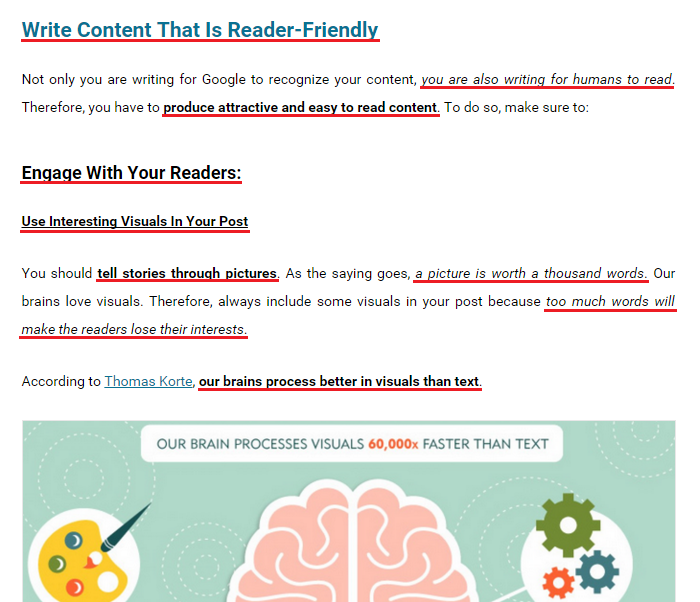
Not only headings are convenient for readers, it also help to improve your ranking on Google for specific keywords and phrases.
Your H1 tag is important, but your H2 and H3 tags can no only help break up content and make it more readable, but can help people scan the content for further confirmation of its relevancy and value.
Navigation
Menus are an often neglected opportunity with SEO practitioners, but they provide huge importance in user experience.

In UX, the navigation of your site should encapsulate everything you offer users.
As for the body content of your article, you can include navigation links using relevant keywords and phrases. Like what I’ve done it in this article, and you may have ended up opening one of our other articles to read. This increases your time on the site and makes it more likely you’ll use one of our tools.
Call-To-Action
Your call-to-action is what will convert readers into subscribers, consumers, members or ambassadors – whatever it is you want from them, you are entitled to tell them explicitly through your call-to-action.
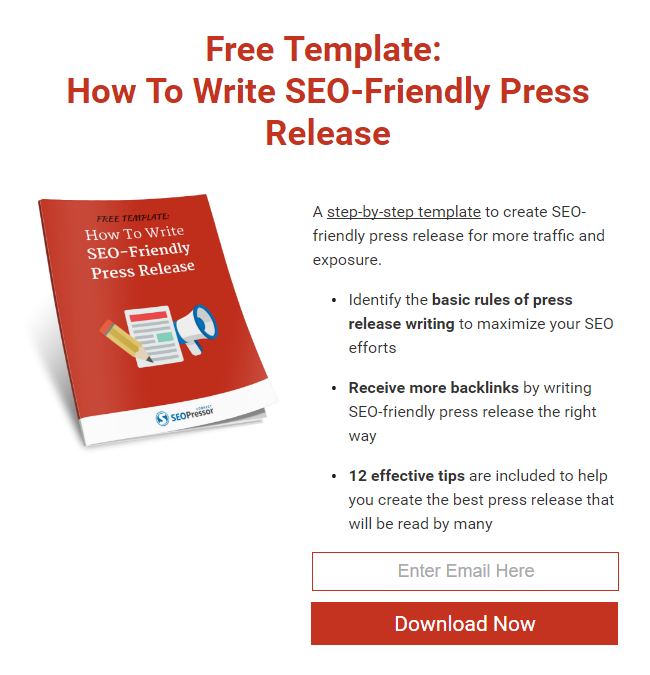
Your CTA should still focus on what benefits users will get from their click, but can be more product or service oriented.
This little section is probably the shortest guide to creating the best content you’ll find online. Tick these boxes and you’ll see results without doing anything else in this article. Do it all, and those results will increase even further.
A competent user experience is no longer enough. If someone can navigate your website without experiencing any signs of a brand perspective, attitude or personality, you will be instantly forgettable to users.
Fortunately, there are a number of powerful and rewarding ways to exceed customer expectations:
Surprise
Delight is a powerful emotion. Often it is triggered by the element of surprise. Surprise is an innate reaction, an animal startle response that we haven’t evolved out of.
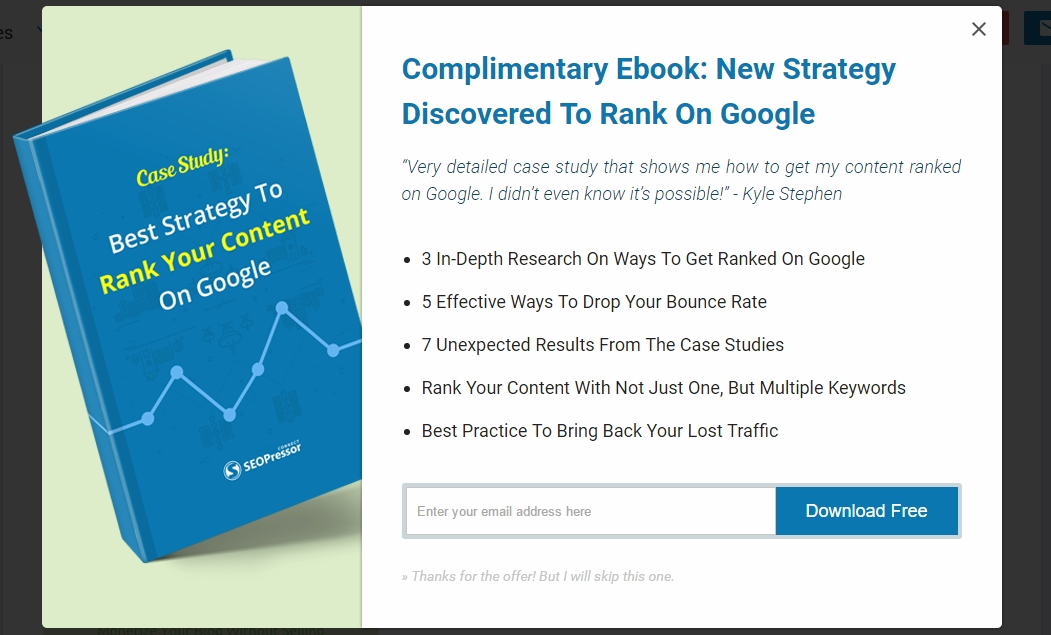
Harnessing the power of surprise will take your website to the next level, both on landing pages and in pop-ups.
A pleasant surprise is powerful because it has hacked our brains and bypassed the rational parts of the brain, then rewards us for letting it in.
Visual Identity
Having a strong visual identity is essential to the way people perceive your brand, and carrying this identity through into your content with images and graphics will reinforce that users are reading your content, not just content on the internet.
Simple and Emotive
The problem with sesquipedalian loquaciousness (that is, love of using long words) is that it obscures your meaning for most people. Use clean, easy language and make it emotive. Triggering feeling in people is about making a connection, and that connection will strengthen loyalty to your brand.
Have Fun
There are numerous opportunities to show personality on your website that people weren’t expecting. There are great examples of fun 404 pages for example, but you can even get them into dialogue boxes like MailChimp have.
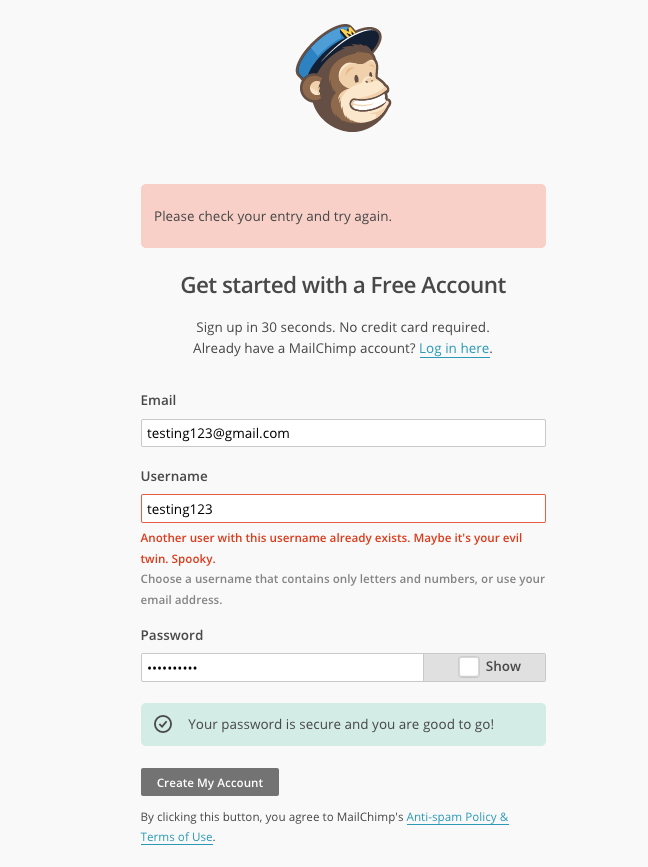
Other great opportunities include:
How much patience do users have? None.
Page loading speed is incredibly important – if a page takes even four seconds to load, you’ll lose 25% of your audience. That is unacceptable to anyone.
It doesn’t matter if you’re using a phone, tablet or desktop computer, people will abandon pages that are slow to load. Often there is a factor of direct competition – people will load two similar pages and read the first one that loads. Here’s a detailed post on the connection between site speed and SEO: https://seopressor.com/blog/connection-between-site-speed-and-seo-today/
Fortunately, we have you covered with a comprehensive guide to boosting page speed. This covers everything you need to know, but if you don’t have time to read it, here is the biggest single action you can take to streamline your page’s performance:
Image Compression
Images are essential to your articles to keep them interesting and stimulating, but the file sizes can grind your load times to a halt. You want high-quality images rich in detail, without them having to be large in size.
Fortunately, image compression and optimization can offer the perfect trade-off between image quality and image size. There are plenty of free online compression and optimization tools you can use to achieve this.
With your site optimized for speed, you are in the best possible position to help users spend more time on your site.
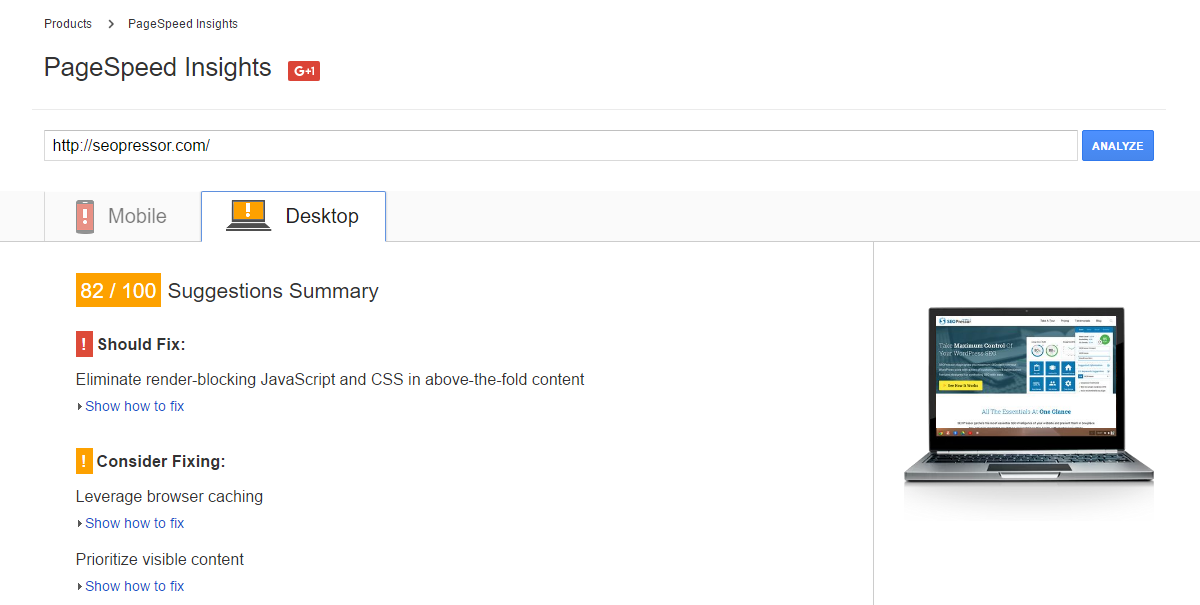
Test your website’s performance at Google PageSpeed Insights tool that analyzes pages and offers suggestions for fixing them.
Loading times are an active barrier to users’ concentration – they break the ‘flow’ of discovery and therefore prevent people from spending more time on your site. Make sure everything loads quickly, and you will increase retention immeasurably.
Using logic and intuition to determine a strategy is useful, but it’s only step one. That helps you create a model but doesn’t tell you how successful that model really is. You need to keep an eye on the results to determine this.
You may take a step back before you take a step forward – you may find certain features of UX have more transformative powers than others. You may also find that the benefits you get from UX in certain areas may not be worth the sacrifices you have to make in SEO in those same areas.
This is an iterative process. Search engines are evolving, human behavior is always changing, and website design is continually responding to these forces. By being brave and experimenting, you can discover the perfect formula of user experience and SEO variables that will create the best results for you and your audience. This won’t be the same for every site.
Remember, you are either winning or learning. There is no failure here.
The ultimate aim of SEO is to drive traffic and revenue by achieving greater visibility on search engines.
The way to achieve that objective is becoming increasingly hinged on user experience. That means the time is coming when user experience and SEO will be one and the same thing.
Business innovation has been trending toward ‘consumer focus’ for decades now, and the web is finally starting to follow suit. By putting the user first, and putting yourself in their shoes when designing your website and content, you are giving your site the best chance of success not only with people, but with search engines.
Google, like people, places importance to page load times, images, link quality, and all the other little things that affect user experience. If there was ever a time to pick up another specialism and get ahead of the curve, mastering UX as well as SEO will give you a huge advantage over the competition.
What are your thoughts on combining both user experience and SEO together? Do you think it’ll help to build your website’s success? Let us know by leaving a comment down below!
Updated: 29 June 2025


Save thousands of dollars (it’s 100x cheaper)

Zero risk of Google penalty (it’s Google-approved)

Boost your rankings (proven by case studies)
Rank High With This Link Strategy
Precise, Simplified, Fast Internal Linking.
